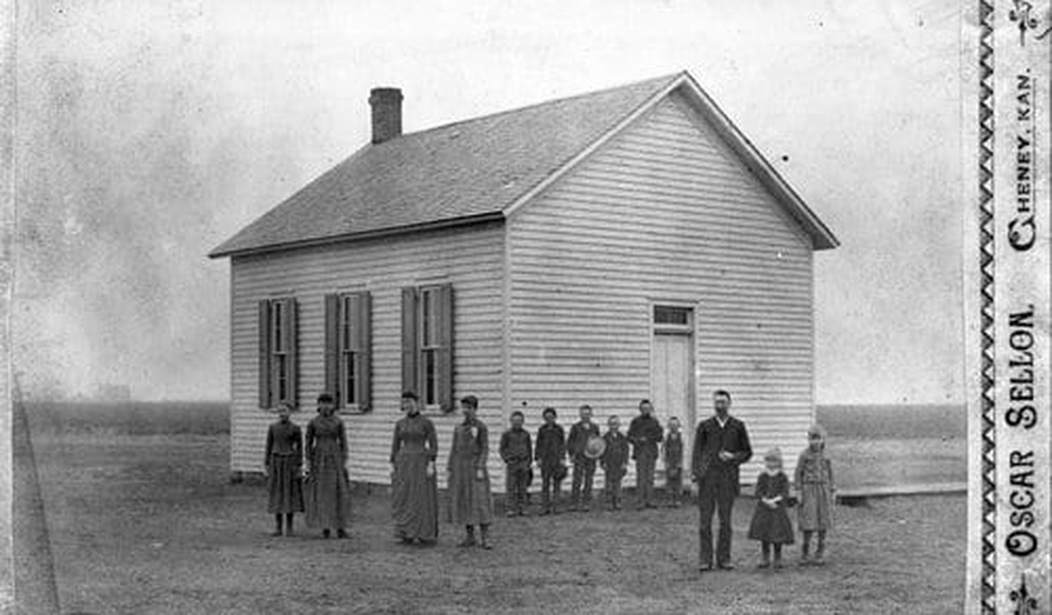Public schools in the United States, particularly in “blue” cities like New York and Washington,D.C., seem to be an ongoing slow-motion train wreck. Recently the state of the New York City schools came to the top of the recurring-news pile. While Mayor (for life) Michael Bloomberg pursued his various important concerns, CBS News reported that 80 percent of New York City high school graduates required remedial classes in reading, arithmetic, or both, before they were prepared for classroom work in New York’s own community colleges.
The report was originally headlined “80 percent illiterate” because not being prepared for college work is not the same as being actually illiterate. But then it’s appropriate to point out that the New York City schools have a graduation rate of only around 65 percent, and we can also assume that students applying for admission to the community colleges are to some extent self-selected as well. If only 20 percent of that selected population are prepared for a community college curriculum, what about the others?
The automatic recommendation when school systems are performing badly is higher funding and more teachers, and when you first look at the New York schools, it seems plausible. After all, the schools in NYC have been reduced to holding bake sales to buy school supplies, and asking parents to bring toilet paper to the schools.
But then we look at the actual school budgets. According to an article in the Huffington Post, New York City reports spending about $18,600 per student per year. A Cato Institute study examines the accounting, which understates or eliminates some costs, and arrives at $26,900 per student per year.
Five years ago I wrote a piece for PJM called “A One-Room Schools for the 21st Century.” I also wrote an extended piece on the same topic called “Cosmopolitan One-Room Schools: A Modest Proposal,” which was picked up and circulated widely. (Bootlegged, to be honest. Dylan, the Grateful Dead, and me. Who knew?)
The basic idea was to go back to basics, and examine a modern one-room school in Manhattan commercial office space. Without going through the whole discussion again, we can sketch an income statement for such a school. These income statements assume the reported cost per student (for both reports), and assume office rents of $50 a square foot a year, along with rather lavish technology and supply budgets of $3000 and $1000 per student per year, respectively. These income statements exclude the cost of a teacher, for reasons which will become clear shortly.
Revenues HuffPo Cato Gross revenues 446,400 624,000 Expenses Rent @ $50/ft^2 31,250 31,250 Tech @ $3000/student 72,000 72,000 Supplies @ $1000/student 24,000 24,000 TOTAL EXPENSES 127,250 127,250 NET INCOME 319,150 496,750
Based on these figures, we now have a net income of $319,150, or $496,750 per 24-student classroom in midtown New York commercial office space, depending on which figures we use for per-student spending.
We exclude the teacher’s salary because my original article made the assumption that these were essentially entrepreneurial schools: net income became the “wages” of the teacher.
So let’s look a little further. New York teachers’ salaries, according to their website, start out at about $45,000 a year ($52,000 with a master’s degree) and max out at just over $100,000 a year. If we assume that these one-room schools attract the highest-paid teachers, that leaves between approximately $200,000 and $400,000 in net income per classroom per year, or $8,000 to $17,000 dollars per student per year.
Which is to say, the gross profit percentage is near 50 percent.
As an aside, if New York wants to start one of these schools, I’ll volunteer to run it. I’ll throw in an annual two-week summer tour of Europe for all the students and six adults as chaperones. Back of the envelope, that’s about a $30,000 expense, and I get a tour of Europe in the bargain — and still make $350,000 a year!
Cui bono? —Lucius Cassius Longinus Ravilla
Imagine, if you will, that we were running a for-profit company in the same environment as a public school system: providing an essential service, with a near-total monopoly, in that even potential customers who choose not to buy are still charged full price. It would be massively profitable, until they caught us; the stockholders would make a real killing. Even more so if the quality of the product could be reduced with little impact on revenues.
A for-profit company would also be expected to distribute any profits that aren’t retained to the stockholders. As we know, the New York City schools aren’t awash in excess cash, so like a for-profit company, they must be distributing the profits somehow. If we find out who is getting the profits, we know who the effective stockholders are.
“When school children start paying union dues, that’s when I’ll start representing the interests of school children.” — Attributed to Albert Shanker, former president of the American Federation of Teachers
Okay, I admit it: I’m giving away the punchline. Who benefits? It’s not New York City schoolteachers: remember that a teacher with a 20 student class is still bringing in more that $400,000 in revenue for a nine-month semester, whether they’re paid $45,000 a year or the maximum, and they basically don’t get any more (or any less) based on anything but seniority. Numbers for New York City schools have been hard to find, but in New York state, school spending has increased, teachers’ pay has increased, but non-teaching professionals’ pay has increased faster. In Nassau County, just outside New York City, the first 30 school employees listed on the RocDocs site make more that $250,000 a year, with the highest salary being that of the superintendent, at $567,248.00. (And I’d love to show you actual New York City statistics, but they are hard to find. Curiously so.)
I’ve got one more rule that serves me well. I assume that every human institution optimizes its behavior to maximize rewards, and while money isn’t everything, when you’re looking at reward it’s the way to bet. I think we must conclude that New York schools — and this analysis can be replicated in nearly every big-city school system — are being run to benefit not the teachers and, with 80 percent near-illiteracy rates, not the students. The school systems are a very successful, profit-making institution that distributes their profits to the “stockholders” — the non-teaching professional staff.










Join the conversation as a VIP Member